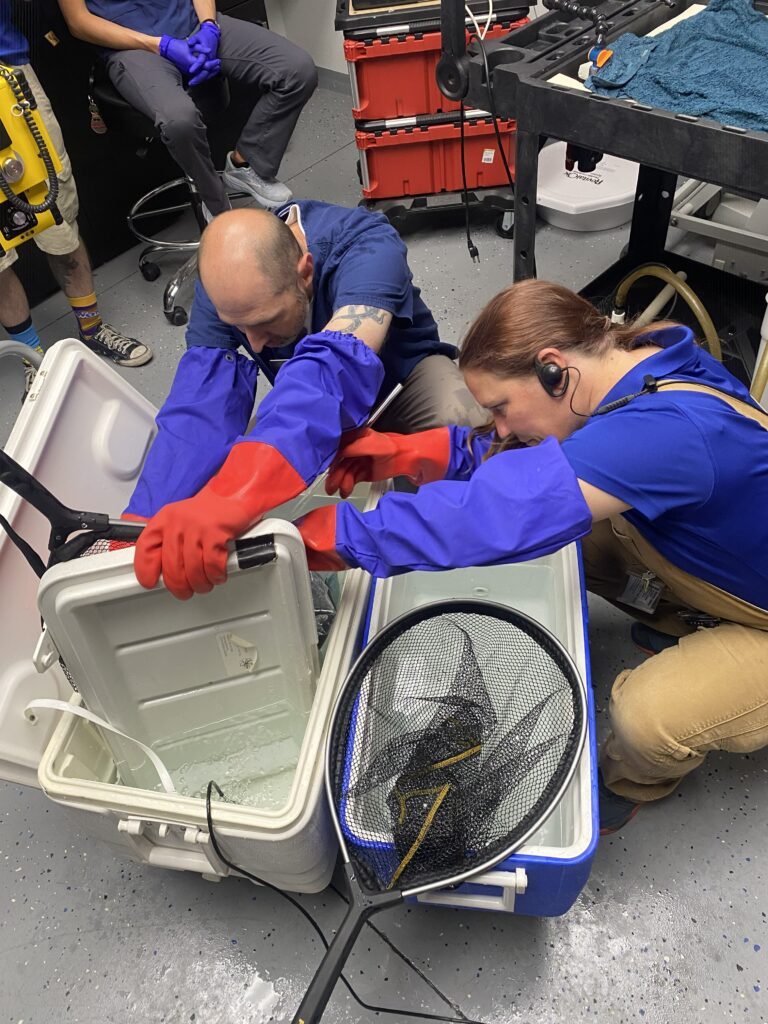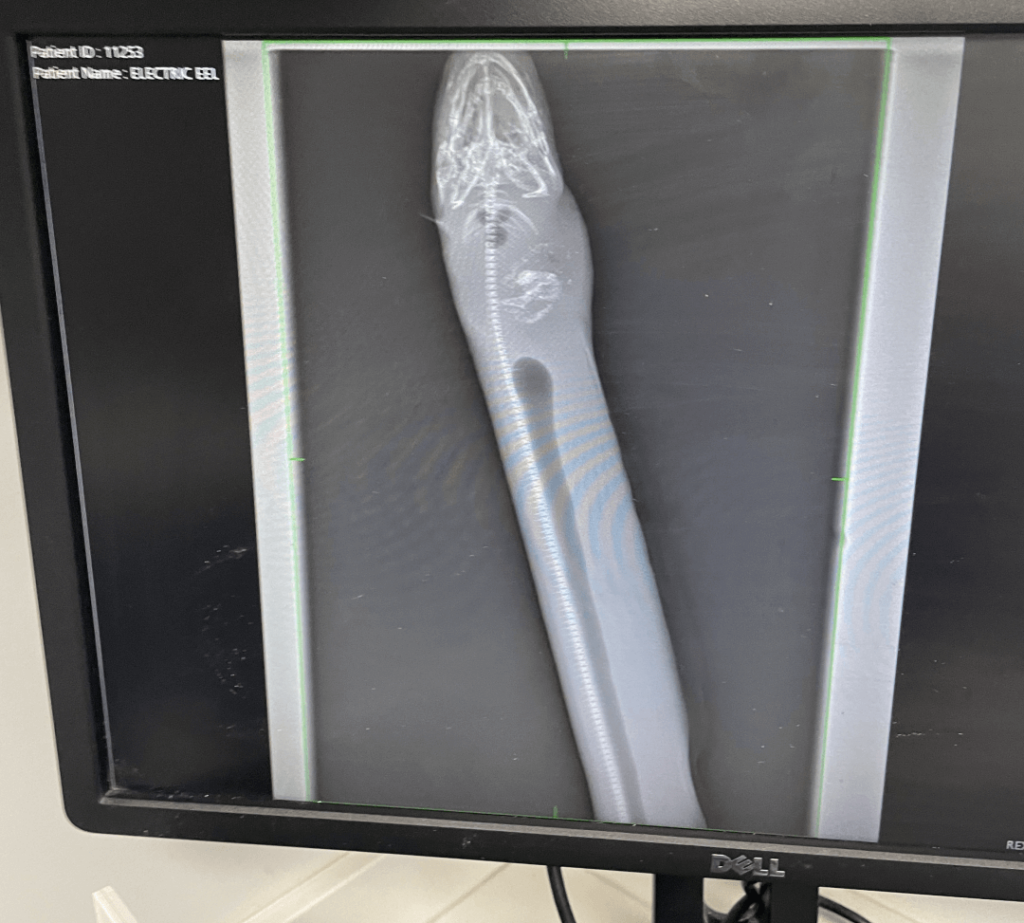Our electric eel had a procedure performed on May 23 to remove some sand that had become trapped in the eel’s stomach.
Electric eels are actually a type of knifefish, so their name is a bit misleading. Our electric eel is only 3 years-old, and hasn’t developed enough to determine its sex so we won’t know if it’s female or male until it gets older. This species of eel is born being the size of a pencil, but can grow up to 6 ft!

Electric eels also have interesting anatomy, because 90% of their body is technically just tail. All their major organs like their heart and stomach are located right behind their head. The rest of their body is just muscle and electricity generation!
Our procedure starts just like any other fish exam, with the special addition of heavy rubber gloves, special nets, and a lot of extra caution. Fish anesthesia is done by placing the animal in water that has an anesthetic chemical dissolved in it. Like many fish that come from warm, low-oxygen environments, electric eels can breathe either via their gills, or directly from the surface. This means anesthesia can take a very long time to have an effect compared with other fish species, and our eel took almost an hour to fall completely asleep.
Once asleep, the eel was moved to our fish anesthesia cart, which allows the vet team to continue to pump anesthesia and water over the animal’s gills and keeps them moist, while also providing a stable surface for medical procedures. Then our facilities team and their electrician helped our vet team with an important, but unusual step. To protect the vet team (and their expensive equipment) from accidental electrical discharge, the electric eel was grounded. This was achieved with a specially-made plug that connected a wall outlet’s grounding port to an insulated copper wire. This wire was then clipped on to a small, sterile needle that was placed into the eel’s muscle. This meant that any major electric discharge would be transferred safely away and grounded.

Once safely grounded, the procedure itself was fairly quick. A special camera, called an endoscope, was placed into the eel’s stomach to confirm the presence and location of the sand. Then a tube was passed into the stomach, and several syringes full of water were flushed in. Then the vet gently massaged the stomach while holding the eel with the head tilted slightly down. This is called gastric lavage, and was successful at removing most of the sand present. A quick x-ray was taken to confirm, and the small amount of sand remaining should pass through the GI tract without any harm. The vet then performed a quick ultrasound to evaluate the eel’s internal organs, including the heart, liver, and GI tract.
Everything on the exam looked good, and the eel recovered well and was able to return safely to its habitat.

